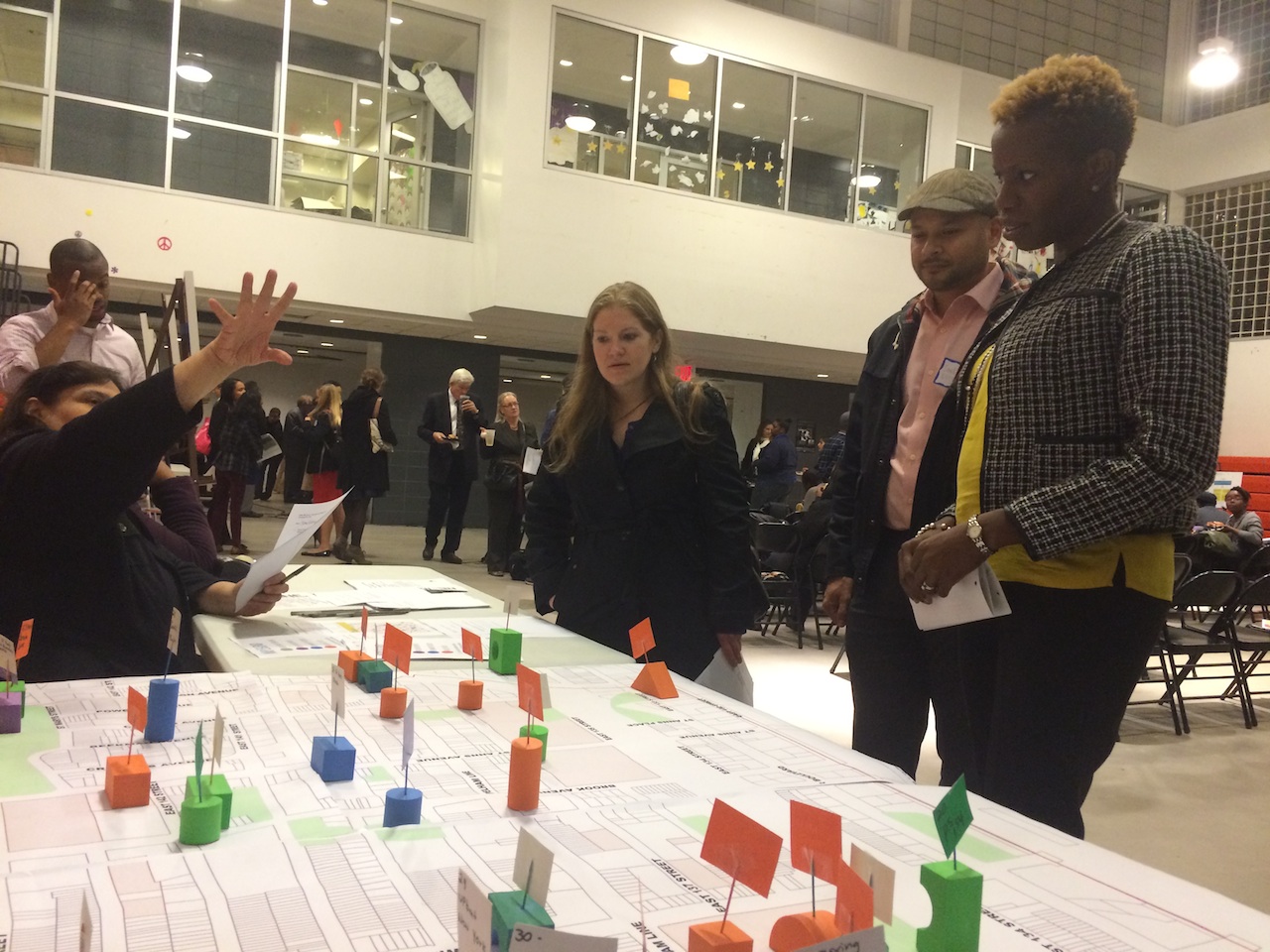
Proposal includes major NYCHA upgrades
After two years of intensive planning for what they hope will be a major facelift to the neighborhood, residents at a Nov. 5 public meeting in Mott Haven finally saw the culmination of their work.
Tenants of local public housing complexes gathered with NYCHA officials and representatives of a Manhattan-based non-profit, LISC, to hear the details of a proposal the sides have collaborated on since 2012, and that will now be submitted to the federal government’s Department of Housing and Urban Development. Officials and residents have been fine-tuning the plan as part of the Choice Neighborhood Initiative, a nationwide investment program to upgrade low-income areas around the country.
The final version of the Neighborhood Transformation Plan, entitled Make Mott Haven, includes: Gut renovation of a major section of the Betances Houses, including kitchen and bathroom replacements in every apartment, as well as heating, lighting and video monitoring system revamps; construction of a greenway that would connect Port Morris to nearby Randall’s Island; and creating a town square at Roberto Clemente Plaza in The Hub, to include a fountain, bike lanes and green space.
“When we took the tour I picked my jaw up off the floor,” said neighborhood resident Millie Morales, 52, responding to the plan. Other local NYCHA developments would also see makeovers under the plan. Proposed housing upgrades include security enhancements at Patterson Houses, new surveillance cameras at Mill Brook and major façade work at Mitchel.
NYCHA’s chair and CEO Shola Olatoye, who has emphasized improved relations between the housing authority and tenants since taking over the position earlier this year, thanked those at the meeting for bringing the project to the final proposal phase.
“The work that you have all been engaged in over the past 22 months has really lit a match, as well as set some really high expectations that all of us have to manage, and to realize and act upon,” she told the crowd.
A $300,000 HUD planning grant funded the planning process. Now residents, housing officials and the non-profit group have to sit and wait as the federal agency studies proposals from cities around the country before deciding which projects to fund. It hasn’t announced how much it will allocate this year, or when it will open calls for applications.
But a HUD spokesman, Charles McNally, said that past amounts have ranged between $20- and $30 million, and that is likely to be the case again. In a phone conversation with the Herald, McNally tried to temper expectations, saying the application process is “extremely, extremely competitive.” Still, the prospects of winning the jackpot have some involved in the application process giddy.
“This is real money, folks,” Olatoye told the crowd. Despite the competition, residents who were involved in the planning process since 2012 seemed optimistic about their chances.
“It’s not if we get it, it’s when we do,” said John Johnson, a longtime resident of the Mott Haven Houses and a leading tenant advocate. “I’m glad about the whole project. When, really, does a chance like this come along?”
Tanya Dempsey, a NYCHA program development director who has overseen the local project since May, said she is committed to seeing the details of the final plan realized whether HUD selects the Mott Haven proposal or not.
“If we get the money great, if we don’t get the money we can find someone else,” she said, pointing out that publicly funded grants and private investors such as banks could also be engaged.
“There are people who are here that want to continue it, and that’s inspiring,” said Dempsey. Residents are bracing for change, whatever the answer from the federal government.
“A lot of people are going to be interested now in the community,” said Giselle Gavin, president of the Betances Houses Resident Association. Gavin, who works in the housekeeping unit of a Manhattan hotel, said she welcomes the new economic opportunities the project could generate, but worries at the same time that if plans to revitalize the neighborhood succeed, residents could find themselves confronted with gentrification pressures.
Ironically, she said, success could “make it such a high market value that it pushes us out.”

